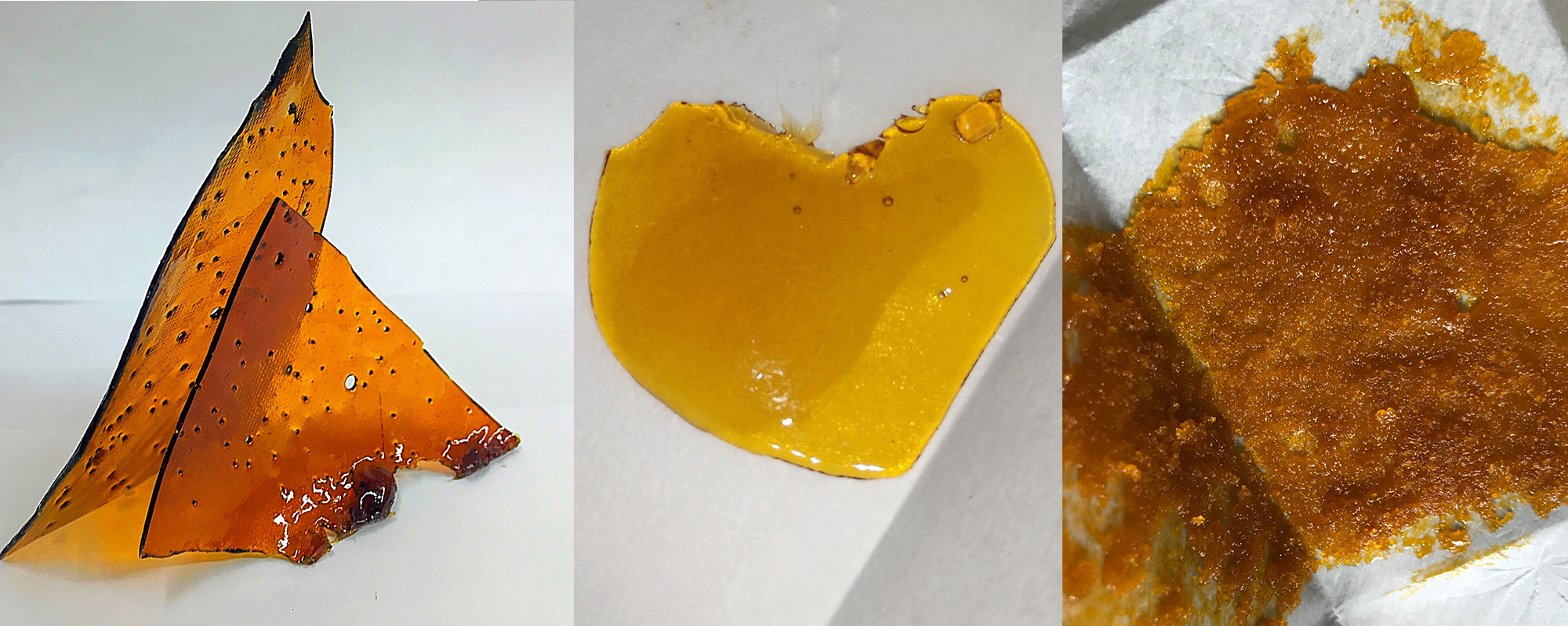The increasing popularity of concentrates is explosive, becoming the fastest growing category sold in recreational stores. With so much attention on this specific category of cannabis products, varieties in textures and consistencies is only increasing. Some have been around longer and are more familiar like shatter, but with new products on the market like THCA crystals and distillate, what exactly is the difference between all of these?
The simple and most common answer, aside from which type of extraction method was utilized, is going to boil down to the purge– not to say that’s the case for all textures and types but it’s usually the case. The purge is the point where whatever solvent was used to extract the cannabinoids and other delicious parts of cannabis from the cannabis plant is removed and the product is about to be ready for consumption. Hydrocarbon extracts are the most commonly found types of dabs. The name hydrocarbon extracts refers to an extract created using a hydrocarbon as a solvent; this includes butane, propane, pentane, hexane, or a mix of them. Your favorite shatter, honeycomb, budder, are all made using hydrocarbon extraction. The way the different textures achieved are often the result of what occurs during purging.
Shatter and sugar wax are going to be at the low end of the spectrum for purging, which also means they will be the type most capable of holding on to terpenes and cannabinoids. Wax such as earwax or butter are going to sit more in the middle of the spectrum and bearing a less dense consistency than shatter. At the far end of the scale is crumble and honeycomb, which is often whipped as it’s purged to create a fluffy aesthetic and soft texture, but also the longest purged so with the solvent there tends to be terpenes removed as well.
Distillate is effectively an ultra refined hydrocarbon extract. BHO, for example, heated low at first will burn off the terpenes that give off taste and aroma, up to higher temperatures which burn off cannabinoids that have a lower melting point than THC. The end product is an extract that has had almost everything worked out of it besides everyone’s favorite psychoactive cannabinoid—tetrahydrocannabinol.
